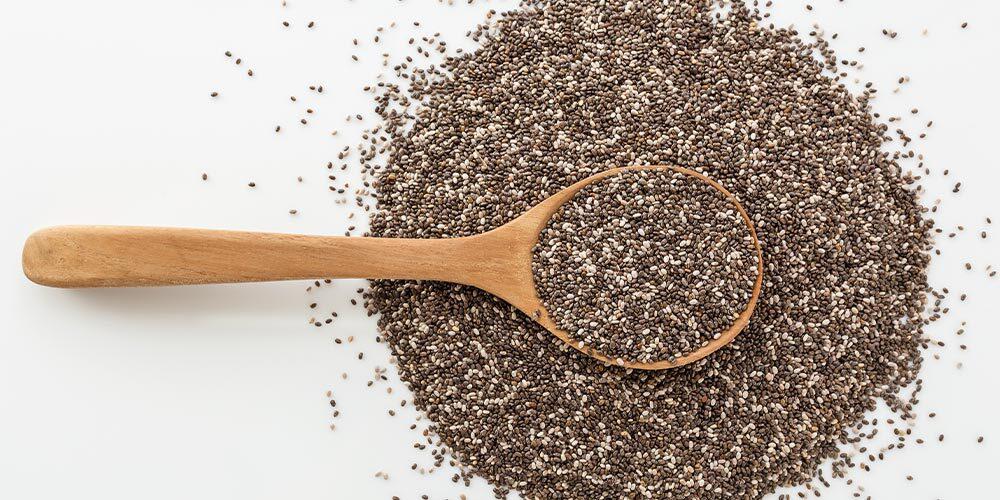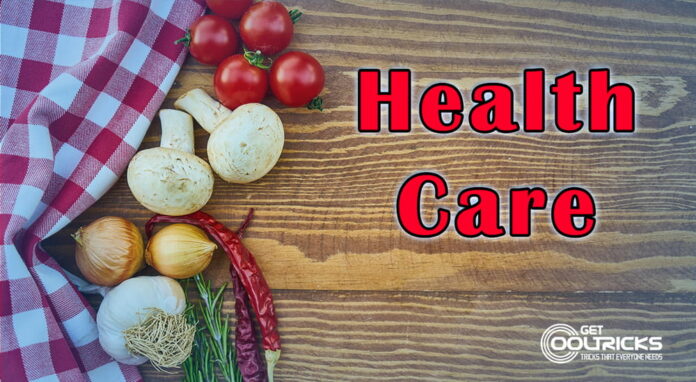Chia seeds come from the plant Salvia hispanica L. The chia seeds are tiny black or white. Chia seeds may be small, but they’re incredibly rich in nutrients. It is well known for its high fibre content, as well as its high levels of antioxidants, omega-3 fatty acids, and other nutrients. Chia seeds have been traditionally used as a food source and for medicinal purposes by the indigenous people of Central and South America.

Nutrition High of Chia Seeds
Some of the key nutrients found in chia seeds include:
- Fibre: Chia seeds are high in fibre, with about 10 grams of fibre in a 28-gram (1-ounce) serving.
- Protein: Chia seeds are a good source of protein, with about 4 grams of protein in a 28-gram serving.
- Omega-3 fatty acids: Chia seeds are rich in omega-3 fatty acids, with about 5 grams of omega-3 in a 28-gram serving.
- Antioxidants: Chia seeds are high in antioxidants, which can help protect the body from damage caused by free radicals.
- Minerals: Chia seeds are a good source of minerals such as calcium, potassium, and iron.
- Vitamins: Chia seeds are a good source of vitamins such as vitamins C, vitamin E, and B vitamins.
Top 7 Health Benefits of Chia Seeds

Chia seeds have a lot of possible health advantages and are a good source of numerous essential elements. Chia seeds have major benefits, such as:
A Lot of Fiber
Chia seeds’ high fibre content is one of their key advantages. Around 11 grams of fibre, or a major amount of the daily allowance of 25 grams for women and 38 grams for men, are included in each ounce (28 grams) of chia seeds. Fibre is beneficial for digestive health and can help you feel full, which may help you lose weight. Additionally, it might aid in lowering the chance of constipation and other digestive problems.
Antioxidants Abundant
Antioxidants, which are chemicals that aid in defending cells against harm brought on by free radicals are also abundant in chia seeds. Free radicals are unstable chemicals that have the potential to harm cells and are thought to play a role in the emergence of chronic illnesses including cancer and heart disease. Antioxidants can aid in scavenging free radicals and stopping this damage. This could lower the chance of developing chronic illnesses and improve general health.
Potentially Better Blood Sugar Control
Chia seeds may aid in bettering blood sugar regulation and lowering the risk of type 2 diabetes, according to some research. According to one study, patients with type 2 diabetes who consumed 37 grams of chia seeds every day for 12 weeks had better blood sugar management and lower blood pressure than those who did not.
A variety of Crucial Nutrients for Bone Health
Several nutrients vital for bone health are abundant in chia seeds, including:
- Calcium
- Phosphorus
- Magnesium
According to several observational studies, getting enough of these nutrients is essential for maintaining adequate bone mineral density, which is a marker of bone strength. The ALA found in chia seeds may also be advantageous for bone health. Observational studies have connected this nutrient’s consumption to increased bone mineral density. So eating chia seeds may regularly keep your bones strong.
Good Protein Source
With about 4 grams of plant-based protein per ounce, chia seeds are a good source of this nutrient (28 grams). Protein is a necessary ingredient for maintaining healthy skin, hair, and nails as well as for constructing and mending tissues. You can increase your fibre consumption and other critical nutrients while still getting the protein you need by incorporating plant-based protein sources into your diet, such as chia seeds.
Omega-3 Fatty Acids
Omega-3 fatty acids are essential for heart health and are also abundant in chia seeds. Polyunsaturated fats called omega-3 can lessen the risk of heart disease by lowering inflammation and raising cholesterol. Omega-3s may have anti-inflammatory properties in addition to their potential advantages for heart health, which may reduce the chance of developing other chronic illnesses including rheumatoid arthritis and asthma.
Possibly Lowers High Blood Pressure
Heart disease and stroke are both at risk for heart disease and hypertension, or high blood pressure. According to some research, chia seeds may help lower high blood pressure. In a study of hypertensive individuals, those who ate 37 grams of chia seeds per day for 12 weeks experienced significantly lower blood pressure than those who did not.
How to Consume Chia Seeds
Here are some ways to consume chia seeds:
- Add to Smoothies: Chia seeds can also be added to smoothies for a boost of fibre and omega-3s. Simply add a tablespoon or two to your favourite smoothie recipe. You can also make chia seed smoothie bowls, where soaked chia seeds are added to frozen fruits, yoghurt or milk and blended until smooth.
- Add to Baked Foods: Chia seeds can be added to baked goods such as bread, muffins, and pancakes. They add a nice crunch and a boost of nutrition to these foods. You can add chia seeds in whole or ground form, but be sure to adjust the liquid quantity in the recipe accordingly, because of the absorbent nature of chia seeds.
- Soak them in Water or Milk: Chia seeds can be soaked in water or milk to form a gel-like consistency. This is known as chia pudding. To make chia pudding, simply mix 1/4 cup of chia seeds with 1 cup of milk (dairy or non-dairy) and sweeten to taste. Let the mixture sit for at least 20 minutes to allow the chia seeds to absorb the liquid. You can also add in fruit, nuts, and other flavourings of your choice.
- Add to Salads and Other Dishes: Chia seeds can also be added to salads, yoghurt, oatmeal, and other dishes as a topping. They add a nice crunch and a boost of nutrition to these foods. They can also be added to meat dishes or as a breading for chicken, fish or even tofu.


